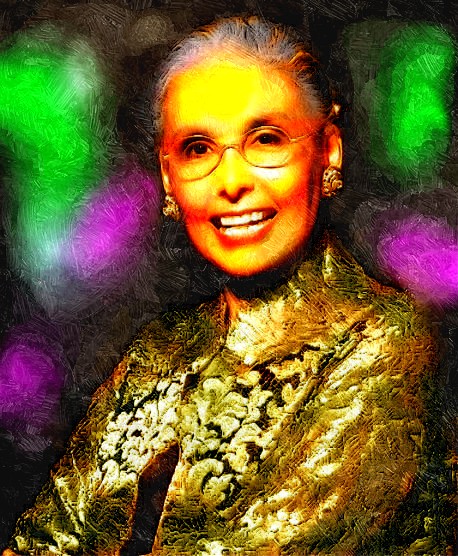|
*
*
*
*
*
*
*
*
*
*

Lena Horne is known as one of the most popular African American entertainers of the twentieth century.
A woman of great beauty and commanding stage presence, she performed in nightclubs, concert halls, movies, and on radio and
television.
Lena's early years
Lena Horne was born in Brooklyn, New York, on June 30, 1917. Her father, Edwin "Teddy" Horne, who
worked in the gambling trade, left the family when Lena was three. Her mother, Edna, was an actress with an African American
theater troupe and traveled extensively. Horne was mainly raised by her grandparents, Cora Calhoun and Edwin Horne. Yet, she
still moved a great deal in her early years because her mother often took her with her on the road. They lived in various
parts of the South before Horne was returned to her grandparents' home in 1931. After they died, Horne lived with a friend
of her mother's, Laura Rollock. Shortly thereafter Edna remarried and Horne moved in with her mother and her mother's new
husband. The constant moving resulted in Lena having an education that was often interrupted. She attended various small-town,
segregated (separated by race) school's when in the South with her mother. In Brooklyn she attended the Ethical Cultural School,
the Girls High School, and a secretarial school.
From an early age Horne had ambitions of becoming a performer—much against the wishes of
her family, who felt she should have higher goals. The Hornes were an established middle class family, with several members
holding college degrees and distinguished positions in organizations such as the National Association for the Advancement
of Colored People (NAACP) and the Urban League (a group that worked to increase the economic and political power of minorities
and to end discrimination based on race). Nonetheless, Horne pursued her own course and at age sixteen was hired to dance
in the chorus at Harlem's famed Cotton Club. In

Lena Horne.
Reproduced by permission of
Schomburg Center for Research .
Experiences unequal treatment because of race
In 1937 Horne married minor politician Louis Jones, by whom she had a daughter, Gail, and a son,
Edwin (they separated in 1940 and divorced in 1944). She gained some early stage experience in Lew Leslie's revues, Blackbirds
of 1939 and Blackbirds of 1940, and in 1940 she joined one of the great white swing bands, the Charlie Barnet Orchestra. But
as the group's only black member she suffered many humiliations of racial prejudice, especially from hotels and restaurants
that catered exclusively to whites.
Horne left Barnet in 1941. Her career received an immediate boost from entertainment manager John
Hammond, who got her a long engagement at the famous Cafe Society Downtown, a club in New York City. It was at the Cafe Society
that Horne learned about African American history, politics, and culture and developed a new appreciation of her heritage.
She rekindled her acquaintance with Paul Robeson (1898–1976), whom she had known as a child. Horne's conversations with
Robeson made her realize that the African American people were going to unify and make their situations in life better. She
felt she needed to be a part of that movement. From that point onward, Horne became a significant voice in the struggle for
equality and justice for African Americans in the United States. Read
more: Lena Horne Biography - life, family, story, death, history, school, mother, son, information, born,
college, movie, contract, husband, house, marriage, time, year http://www.notablebiographies.com/Ho-Jo/Horne-Lena.html#ixzz0ngzcw6vd
BLUES HALL OF FAME

|
